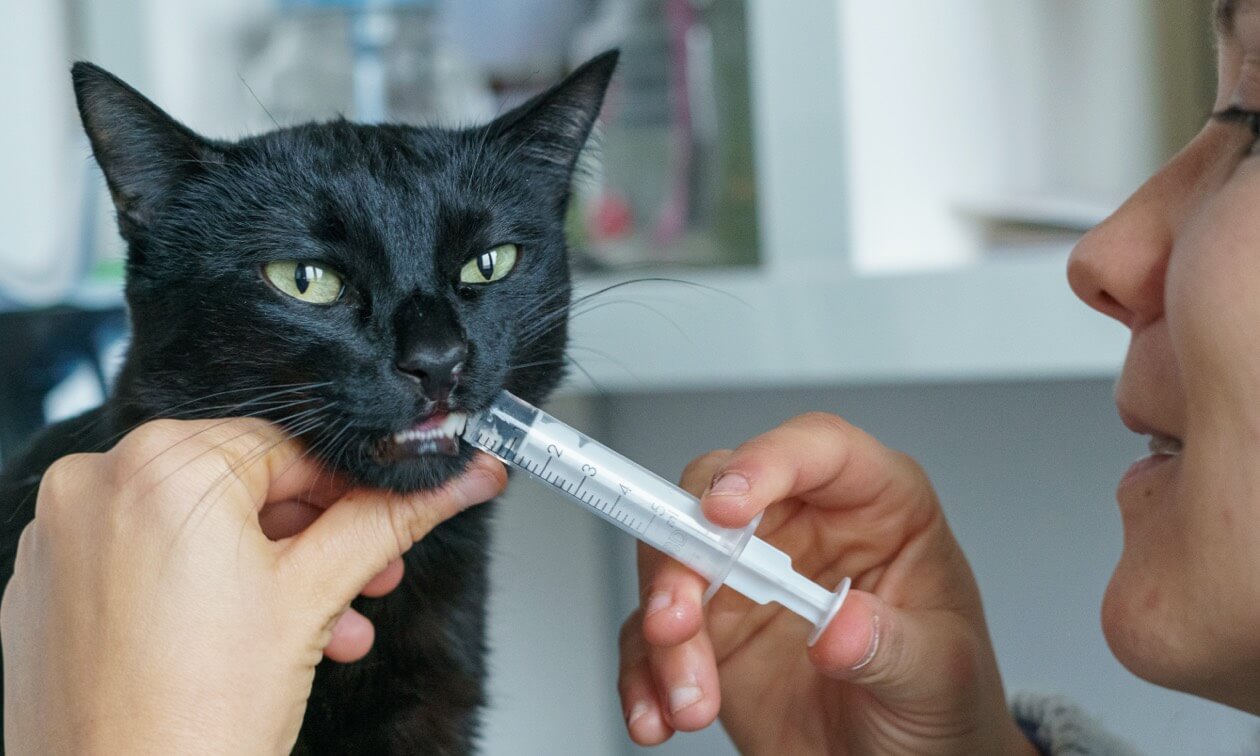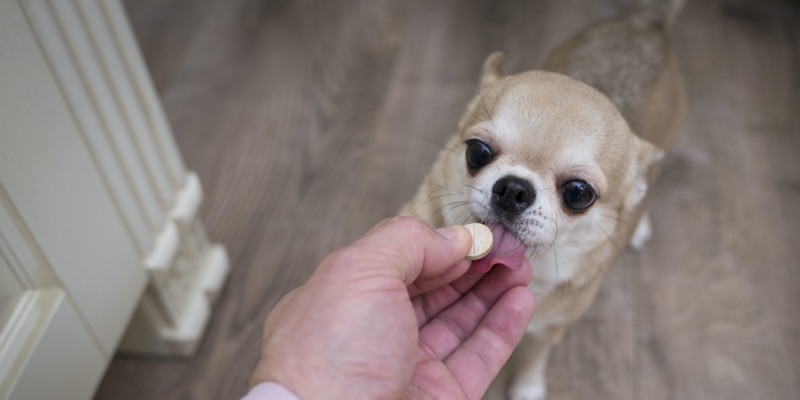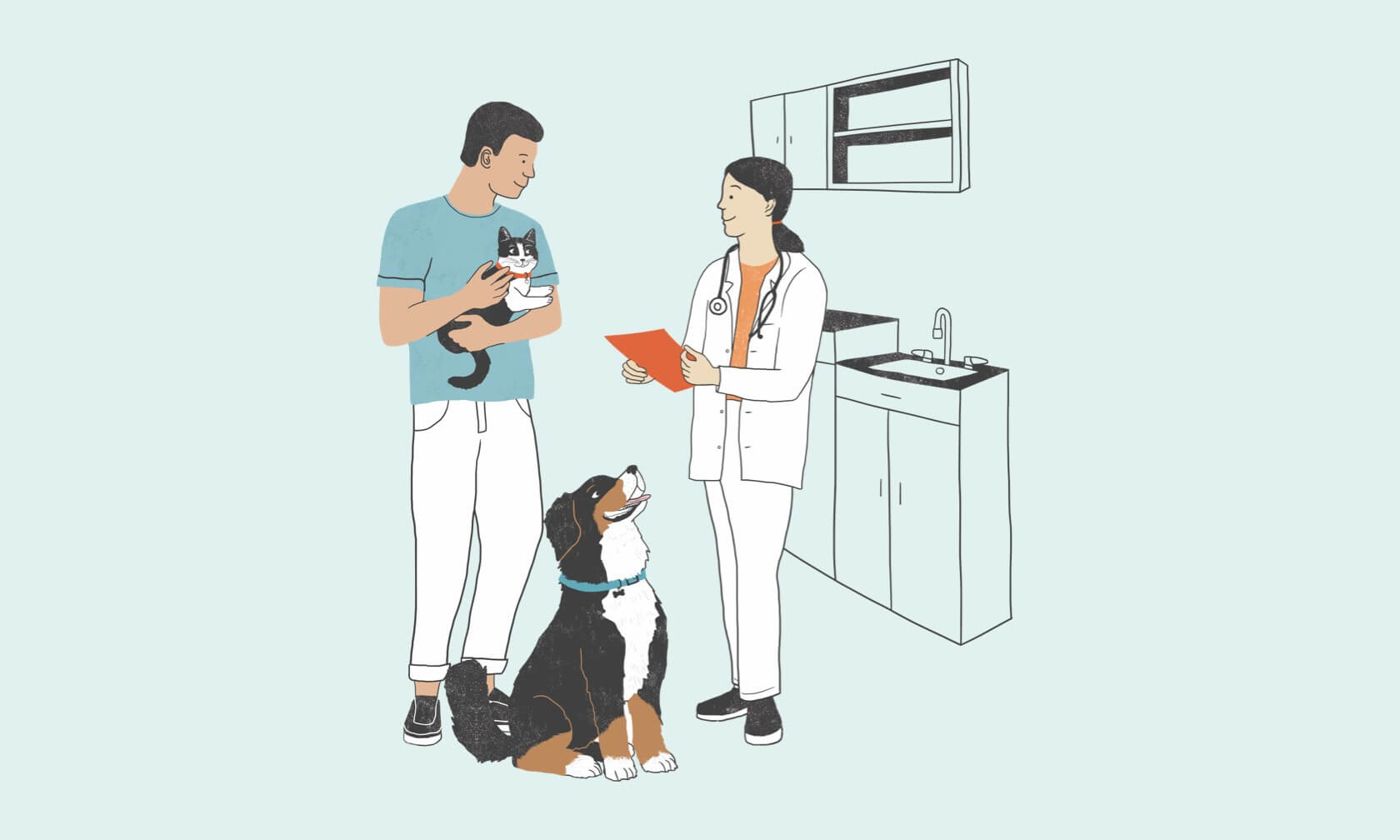Every cat owner knows how hard it can be to give cats medications. It doesn’t always have to be stressful or dangerous — with a bit of preparation and training, your cat can take their meds like a champ. Read on to learn how to give a cat liquid medicine and find the approach that works for you both.
How to Disguise Your Cat’s Liquid Medication
Mixing your cat’s liquid medication into soft food or treats can be one of the easiest methods. Remember these tips:
- Pick a food your cat likes — wet cat food, baby food (onion/garlic free), plain Greek yogurt, pureed squeezable treats, or some other cat-safe puree.
- The food must be smelly enough to mask the smell of the medication.
- Do this when your cat is hungry and only offer a small portion (so they don’t stop eating before finishing the medication).
Try a layered syringe parfait.
- Take a favorite puree treat or wet food and water it down to easily flow through a large syringe.
- Inside the syringe, layer a little of the food/treat, then the medication, then the food/treat again.
- Squeeze this into your cat’s mouth or let them lick it from the syringe.
- The layering means they’re starting and ending with a good flavor.
You can try this same layered approach without the syringe, using a plate.
- Place a small dollop of the food/treat on the plate, then medication, then food/treat.
- Here, the layers help ensure the cat starts and finishes the medication instead of taking one lick, tasting the medication, and leaving.

The Direct Approach to Giving Your Cat Liquid Medication
Sometimes giving medication directly into your cat’s mouth is best — but don’t just grab them and force the meds down their throat.
When a cat isn’t in control, they get anxious. Forcing them to do something automatically puts them in a defensive state. If they choose to do something, they’re more relaxed and open to it. The trick is getting them to choose to participate in medicating.
- Be Prepared
Shake the medication and draw up the appropriate dose before your cat is involved. - Pick Your Position
Placing your cat on a table or counter gives you a good angle where you can stand behind them with both arms available to gently hold them in place and handle their mouth. A floor kneeling position can also work, using your legs in the shape of a “V” to keep your cat gently in place. - Stay Calm
Do this at a quiet time when your cat is relaxed. - Lure Your Cat
Use an all-time favorite treat to lure them into position. Remember, if you pick them up and put them on the table in a tight hold, they’ll struggle to get away. If they hop up on their own and then turn to face the right direction for treats, they’ll be comfortable and more willing to stay where you need them. - Give the Medication
Position your hand under your cat’s chin or cup it on top of their head, so you can keep the head still. Slip the syringe in their closed mouth just behind the long pointy teeth (or use your thumb on one side of the mouth and index finger on the other side and very gently squeeze to open your cat’s mouth and squirt the liquid in). You can also try pointing their head slightly up, nose toward the ceiling, to naturally open the mouth. - Go Slowly if Needed
Depending on the volume of medication you need to give, be sure to give small enough amounts at one time to allow them to swallow it before administering more. Giving too much liquid all at once can be stressful to your cat and may also cause some of the medication to leak out of their mouth, resulting in wasted medication and an incomplete dose. - Treat Immediately
Follow right away with a treat to reward your cat, create a positive association with the experience, and give them something good to swallow so they’re less likely to try and spit the medication out.
How to Burrito Wrap Your Cat to Give Liquid Medicine
If these techniques aren’t working, or you’re at risk of being scratched or bitten, try a burrito wrap to comfortably restrain your cat. This is a short-term solution, and it’s still a good idea to work on desensitizing them to the process so you can give meds in the future without added stress.
- Place a towel on the table and set your cat on the center of the towel.
- Wrap one end up and around their shoulders and back.
- Do the same with the other side, wrapping in the opposite direction. Both ends of the towel should now be wrapped around and come together under your cat’s chest. The front and back feet should be inside the wrap.
- You’ll either hold the ends of the towel in your hand or secure them under your arm so your kitty stays snug. This can be calming, keep them in position, and keep claws contained, so you’re less likely to be scratched.
- Now give them medication and immediately follow with treats.
More Helpful Tips for Giving Your Cat Liquid Medication
- Don’t forcefully squirt the liquid medication down your cat’s throat. They may choke or inhale it.
- A syringe is often easier than a dropper for measuring and administering.
- Use your dominant hand to hold the syringe.
- If your cat won’t swallow the liquid medication or they start foaming at the mouth, consider a pill form or trying to hide the liquid in food/treats. Some medications can be made into a chewable treat form at a compounding pharmacy. Ask your veterinarian for options.
- Some cats start drooling when they taste the liquid medication. This is stressful, and you won’t know how much of the dosage made it down the throat. If they foam or spit it out, do not give another dose.
- Ask your veterinarian if the liquid medication can be given at room temperature. Some cats accept it better if it’s not cold, though some medications require refrigeration to remain effective.
- Ask your veterinarian for help. They can demonstrate additional techniques. In extreme cases, you can take your cat to the clinic to be medicated or board them there while they’re on medication.
ZPC-01914





